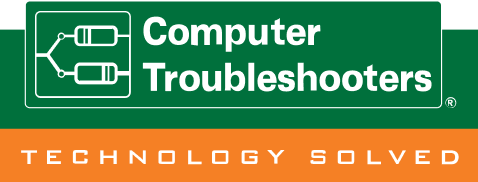CT featured in Crain’s Cleveland Business
Published on: January 22nd, 2009
This article originally appeared on Crain’s Detroit Business on January 15, 2010.
Employee absenteeism is an unavoidable reality for businesses during cold and flu season. But a widespread outbreak, whether it’s of the H1N1 virus or another pandemic, has the potential to elevate problems to a frightening new level.Gartner Inc., an information technology research company, recently predicted that businesses could face work force absentee rates of 40 percent or higher during a full-blown H1N1 pandemic. This presents substantial challenges — chief among them being how to ensure that operations continue if employees or their family members contract the virus. If they haven’t already, companies should take a hard look at how they would deal with this or a similar pandemic. One of the key considerations is information technology. If office employees must remain at home because they or a family member contract H1N1, for example, then they should be capable of working remotely — and accessing company files and data securely. Businesses, no matter what size, need IT infrastructures that are designed for this. Simply copying files to flash drives and discs for use on remote computers puts your business at risk — especially during critical times. These items can be lost, stolen or damaged, and data can be corrupted outside of your network. Building a basic, secure IT infrastructure that keeps employees connected to the office will help your business transcend H1N1 or another pandemic — and it will lay a foundation for broader remote-access capabilities. Accomplishing this takes planning … and some time. Here’s how you can make it happen: — Evaluate: Take inventory of your business’ current computer and communications technology, even if it consists of only a few computers, a server and a simple phone system. Ask basic questions about its performance capabilities: Do you have a firewall in place that can allow remote access? Have you established a technical security policy for your network? If so, does it define remote logins? Does it specify which employees have access to specific information? And does it include a password policy? This is critical, since remote access opens your network to the outside world. Next, take stock of communications equipment outside your offices that would be used in a remote access situation. Identify key employees who would need remote access, and get details about the computer equipment and Internet access they have at home. It’s important to know whether their home Internet connection has sufficient bandwidth to support remote access activities. Do other family members, including children, use that computer, or is it dedicated solely for home office purposes? Is it capable of interfacing with the hardware and software solutions you plan to implement? And can they access e-mail and the Internet on their mobile phones? If you prefer that employees not use their personal computer, ask yourself if you are prepared to supply them with the right kind of equipment to work from home. Also, is your current phone system capable of providing remote extensions, and if so, will you give your employees a phone to work from home? — Plan: Now that you better understand your equipment and technical capabilities, you can make decisions about hardware and software that will meet the specific needs of your employees and your business. For example, most phone systems allow outside callers to dial an employee’s extension at work, and then have those calls routed directly to that employee’s home or mobile phone. Remote access and desktop control software such as LogMeIn, GoToMyPC or PCAnywhere allows employees to access and control their computers anytime, from anywhere — even from their mobile devices. It’s also essential to install a hardware-based firewall in the office that controls access to your network. — Implement and monitor: Once solutions are in place, work closely with your employees to make sure they understand how the remote access equipment they will use actually works. Quarterly training sessions are recommended — bi-annual sessions are a minimum. These allow you to revisit equipment operation and remote access procedures with employees and make adjustments where needed. Management and reporting also are important considerations, especially for small businesses. If employees must work from home, do you want to know what they’re doing with their time — and your equipment? Is it important for you to gauge how productive they are during their time away from the office? And what tools do you have to measure, monitor and manage their performance? Monitoring software has come a long way. With it, you can generate reports that detail specific activities from remote computer and phone usage. Business solutions can give employees remote access to company-specific applications through the Internet while blocking Internet access beyond that. Needs vary by company, so it’s best to consult with an IT professional who can help you determine the right hardware and software solutions for your business. From Crain’s Cleveland Business


